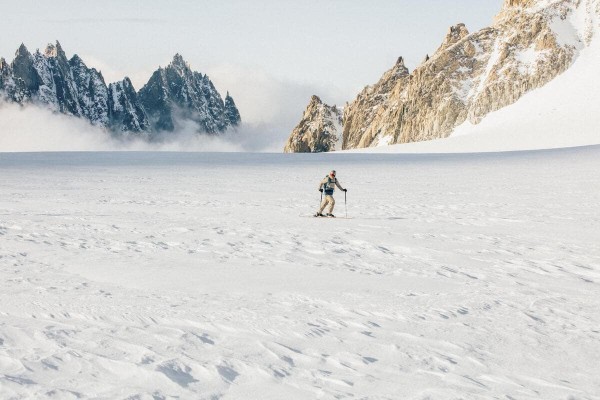Buying skis online
Finding the right ski can be quite time-consuming. With just a few mouse clicks, you can discover a wide variety of options: wide and narrow skis, short and long skis, lighter and heavier skis, and of course, expensive and cheap skis.
The good thing is: The more different ski variants there are, the greater the probability that there is a model that fits you perfectly. The challenge simply is to find that exact ski. But how can you achieve that? Of course, you can use our SNOW-HOW ski advisor.
What defines the right ski?
The right ski fits perfectly to the skier and his or her physical requirements such as fitness, age or weight. It allows you to ski at the upper end of your individual possibilities without being overstrained.
Very important in this context is how a ski reacts to the pressure exerted on it while skiing, i.e. how easily it can be bent and how quickly it returns to its pre-tension, in short, the flex and rebound of a ski. A racer exerts massive pressure on the ski at high speed and therefore needs a ski that can withstand this pressure and, if possible, still returns the energy applied when turning. A beginner, on the other hand, needs a ski that is easy to handle without much force. In addition, a rather well-trained or rather heavy skier needs a comparatively "harder" ski than a skier with similar skiing skills, but who is much less trained or much lighter.
However, a ski should not only match the skills of the driver, it should also match the intended type of use. The most important characteristics that determine the area of use of a ski are its center width, sidecut and rocker. A narrow center width supports fast turning on the slope, a higher center width supports buoyancy in snow or deep snow.
The sidecut, i.e. the ratio of the center width to the shovel and tail width, determines the turn radius of a ski. Slalom carvers and race carvers, for example, usually have the same, very narrow middle width and are therefore pure piste skis. The shovel and tail of a slalom carver are significantly wider, which makes it suitable for very short turns, and the tail of a race carver is significantly narrower, which makes it especially suitable for long turns.
Finally, the rocker is an extended shovel bend that effectively reduces the preloaded portion of a ski. A ski with a very large rocker portion, such as a freeride ski, is very easy to turn and has a good flotation on deeper snow. A ski with a very short rocker or no rocker at all, such as a sporty slalom carver, is characterized by an aggressive turn in the shovel and favors precise carving.
Which ski is the right one for you?
If you are looking for the right ski, the first thing you need to do is determine what level of skiing competence and physical ability you have. Are you a beginner or a more cautious or insecure skier? Or are you an experienced skier who has a solid technique and a certain basic fitness, but wants to take it easy from time to time? Or are you even an extremely confident semi-pro, and push yourself and your equipment to the limit all day long?
If you are not sure how to assess your skiing skills, it might help to imagine how you react to difficult skiing situations, such as black slopes that are rutted or icy or dense fog. Would you rather take off your ski? Or would you manage such a slope safely, but prefer easier slopes? Or are you even looking for such difficult situations because easier slopes are no longer a challenge for you?
Next, you should think about what kind of terrain you want to go and what you want to do there mainly: Do you mainly move on the groomed slopes? If yes: Do you prefer to do short turns, do you prefer to carve turns at high speed across the whole width of the slope or do you want a little bit of everything? Maybe you want to go on and off the slopes? Or would you prefer to leave the full slopes behind you and head off into the off-piste? Do you mainly want to ski downhill through fresh powder or are you attracted by the climb in untouched nature?









